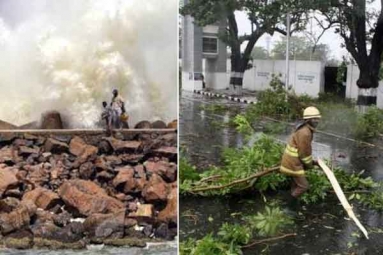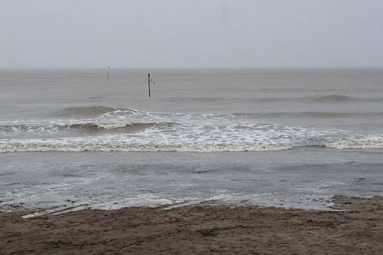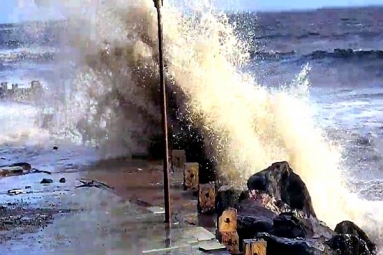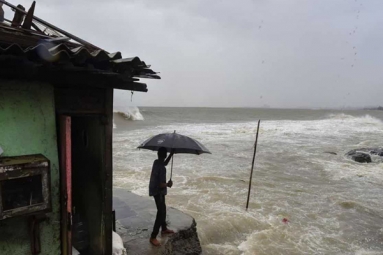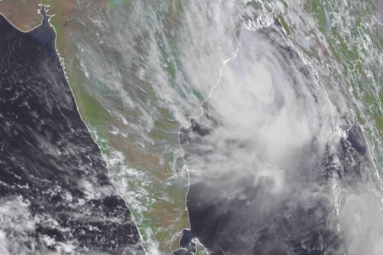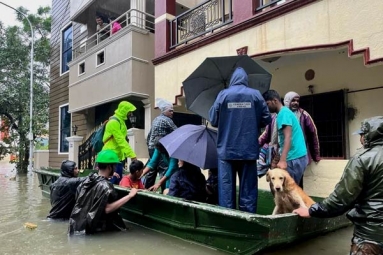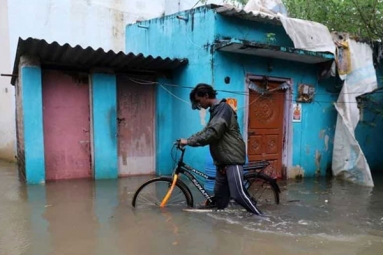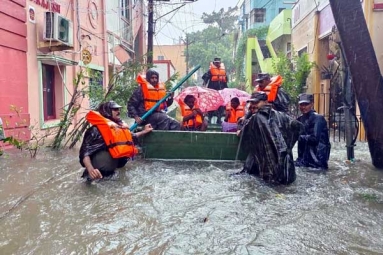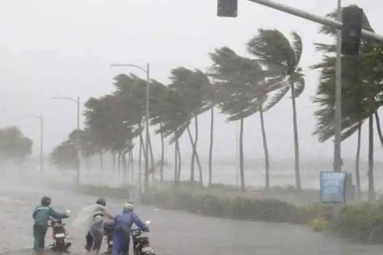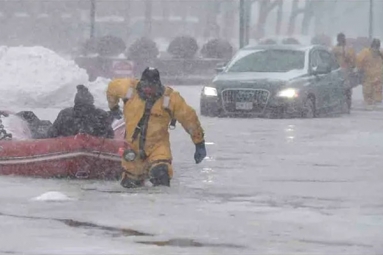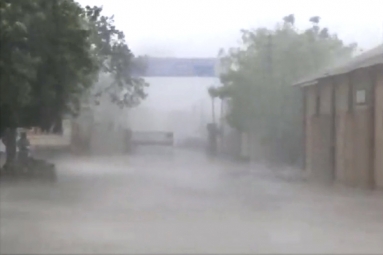Cyclone Fani: UN Agency Praises Indian Meteorological Department on Minimizing Loss of Life in Affected States
May 04, 2019 15:49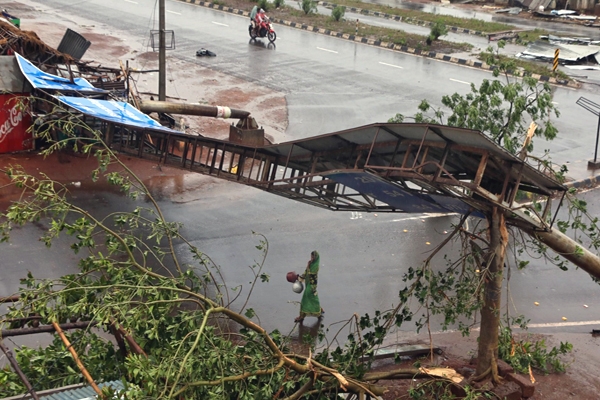
(Image source from: Sky News)
The United Nations International Strategy for Disaster Reduction has commended the Indian Meteorological Department's "almost pinpoint accuracy" of early warnings that helped authorities conduct a well-targeted evacuation plan and minimize the loss of life as extremely severe cyclonic storm Fani made landfall near the coastal city of Puri.
The powerful cyclone, strongest to hit India in 20 years, made landfall in India's eastern state of Odisha, killing at least twelve people.
Heavy rains submerged the large areas in the seaside pilgrim town of Puri and other places. The entire coastal belt of the state was battered affecting about 11 lakh people.
The India Meteorological Department (IMD) has categorized Fani as an "extremely severe cyclonic storm".
Fani’s movements are being monitored by UN agencies and taking every measure to protect families living in refugee camps in Bangladesh, which is on alert.
World Meteorological Organization spokesperson Clare Nullis said the impact the cyclone is expected to be less severe in areas such as Bangladesh's Cox's Bazar which is home to the world's largest refugee camp, populated mainly by Rohingyas who have fled Myanmar.
The Cyclone lashed the coast with maximum wind speeds of up to 175 kilometers per hour, heavy rainfall and coastal flooding, with 28 million people living along the route of the massive storm.
"India's zero casualty approach to managing extreme weather events is a major contribution to the implementation of the #SendaiFramework and the reduction of loss of life from such events," Mami Mizutori, the Special Representative of the United Nations Secretary-General (SRSG) for Disaster Risk Reduction, and head of the Geneva-based UN Office for Disaster Risk Reduction (UNISDR), said.
Highlighting the zero-casualty cyclone preparedness policy of the Indian government, a spokesperson for UNISDR, Denis McClean said: "The almost pinpoint accuracy of the early warnings from the Indian Meteorological Department had enabled the authorities to conduct a well-targeted evacuation plan, which had involved moving more than one million people into storm shelters".
UNISDR also tweeted about the advisory distributed by India's National Disaster Management Authority and local authorities days before Fani made landfall in an effort to minimise loss of life and injury.
Local authorities are accommodating evacuees in over 4,000 shelters, including 880 specially designed to withstand cyclones.
"Schools were shut, airports closed and transport suspended, and although damage to infrastructure was expected to be severe, there were no reports of any deaths," McClean said.
UN Secretary-General Antonio Guterres' spokesperson Stéphane Dujarric told reporters that the UN humanitarian agencies in India have met ahead of the storm's arrival to take stock of preparedness measures.
With Fani threatening devastation in India and Mozambique still reeling from Cyclone Idai, one of the worst tropical cyclones, UNICEF raised alarm about the impact of climate change on children.
The UN children's agency said the cyclone currently hammering India and the back-to-back cyclones that tore through Mozambique in March and April have caused serious damage to the lives of thousands of children. They should be an urgent wake-up call to world leaders on the serious risks that extreme weather events pose to the lives of children.
In Odisha, 28 million people, including 10 million children, are in the path of Cyclone Fani,United Nations International Children's Emergency Fundsaid. "Children will bear the brunt of these disasters," said Gautam Narasimhan, UNICEF Senior Adviser on Climate Change.
He said climate change is linked to rising sea levels and the increase in rainfall associated with cyclones, causing more devastation in coastal but also inland areas.
"In the short term, the most vulnerable children are at the risk of drowning and landslides, deadly diseases including cholera and malaria, malnutrition from reduced agricultural production, and psychological trauma - all of which are compounded when health centers and schools are impacted," he said.
Narasimhan warned that in the long term, cycles of poverty can linger for years and limit the capacity of families and communities to adapt to climate change and to reduce the risk of disasters.
According to the World Meteorological Organization (WMO), the forecast on Friday was that Cyclone Fani "would move north-northeast towards Bangladesh where there were concerns about the effects of potential coastal flooding".
By Sowmya Sangam









